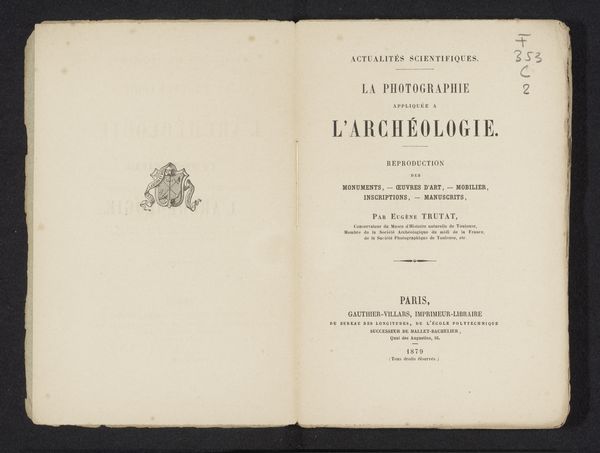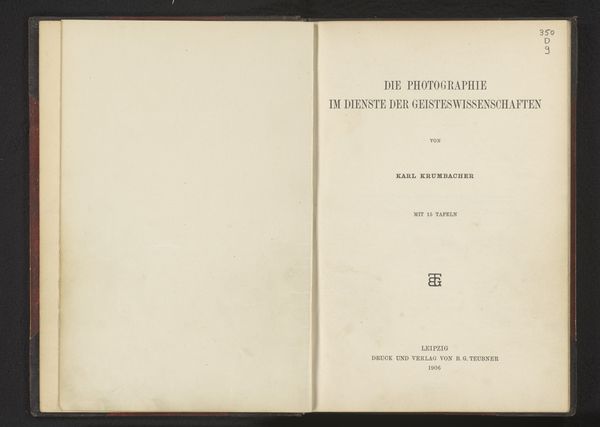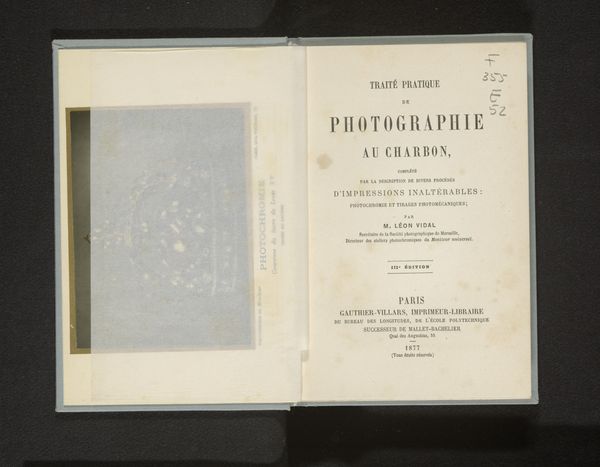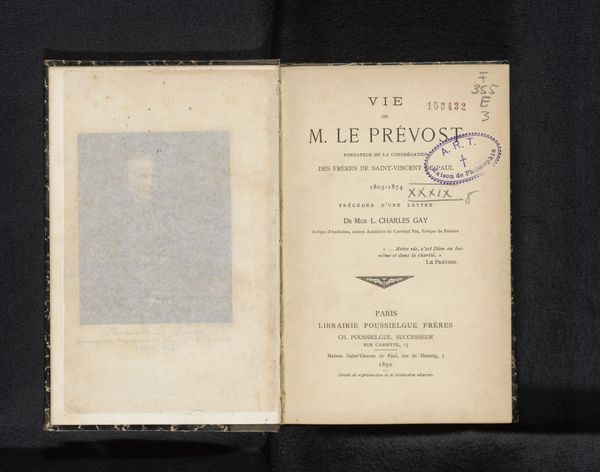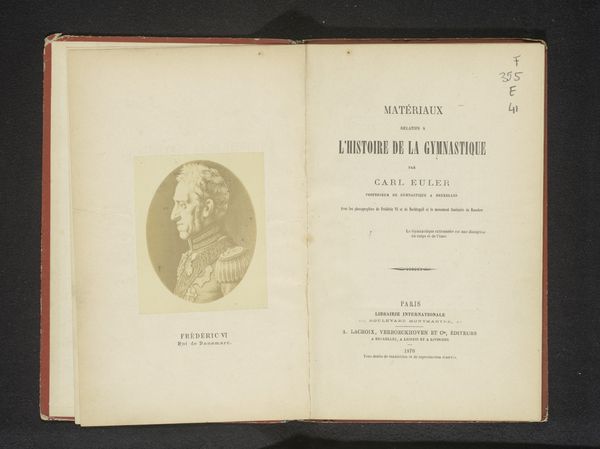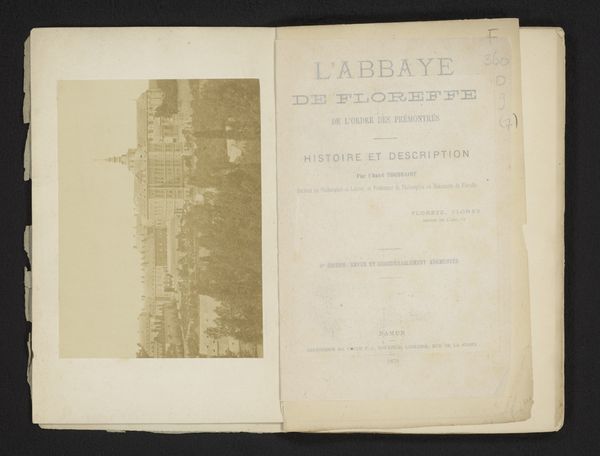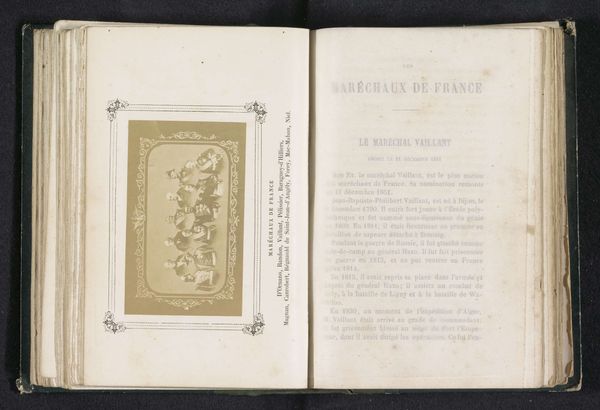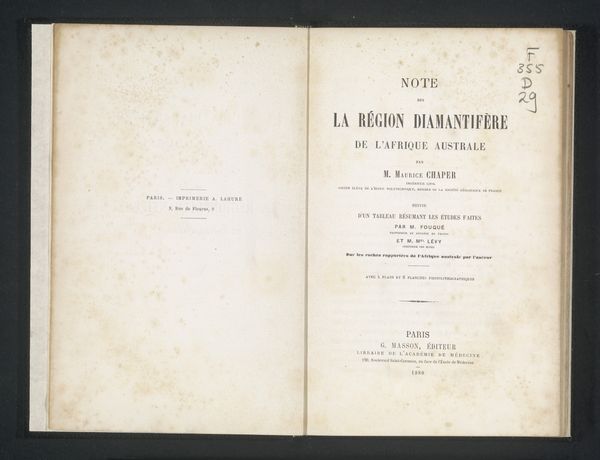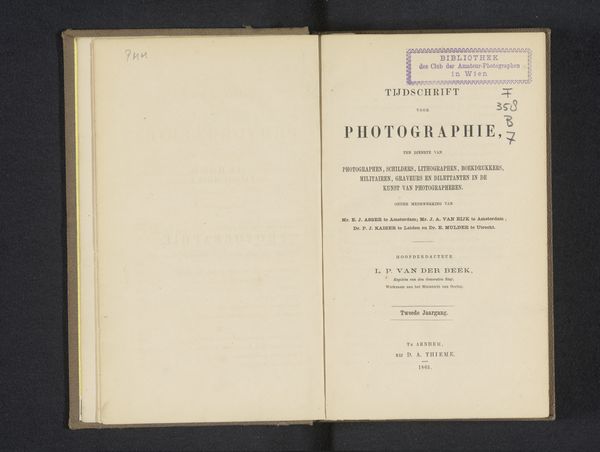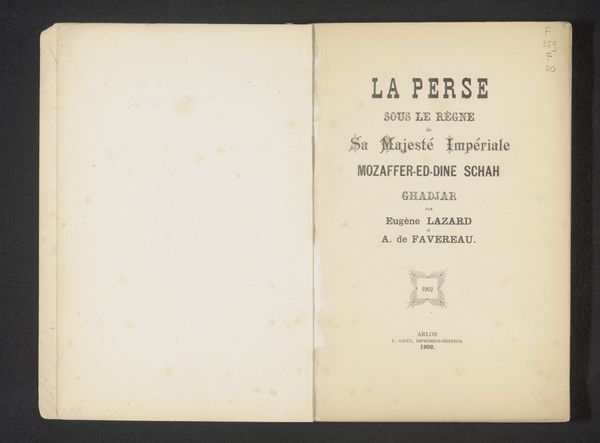
print, paper, typography
#
medieval
# print
#
book
#
paper
#
typography
#
academic-art
Dimensions: height 387 mm, width 295 mm, thickness 15 mm
Copyright: Rijks Museum: Open Domain
Curator: This print from 1893, titled "Amiens: cathédrale," seems like it holds quite a lot of historical information in its composition. It’s like looking at a window into the late 19th century. Editor: Immediately, it's the visual weight of the typography that strikes me. So much detail, a veritable jungle of font choices—is it a book cover, a poster, or something else entirely? And that muted colour palette is so evocative of a certain faded grandeur. Curator: Yes, the typography plays a central role in this academic piece. Produced by Yvert & Tellier, it likely serves as the title page to a book detailing the Picardie region, focusing, in part, on the cathedral at Amiens. Knowing that the society advertised in the image researches Picardy adds an interesting nuance too. Editor: "La Picardie historique et monumentale"—even the title promises something weighty and steeped in tradition. But what was it like, I wonder, to come across such a volume back then? I get this wistful feeling like I should be leafing through this thing by an old fireplace while it's snowing outside. Curator: We should remember that "historical and monumental" in 1893 would have very different connotations. Academic art of this period tried to establish its cultural present by anchoring it to selective parts of the past. Looking at this today is not just about what's on the page, but why they chose to frame their history that way. Editor: That's a solid point—how are our understandings coloured by historical contexts and sociopolitical influences. And do we notice how the cover almost implies that Picardie IS its buildings? Did local cultures feature much at all or was this about solidifying cultural narratives of power, even in this format? Curator: It probably solidifies narratives of power at the time. This document, in effect, is a declaration of identity and cultural worth. And it implies an intellectual community, likely privileged, committed to archiving and understanding their cultural and historic environment from an authoritative standpoint. Editor: I see this now—a layered echo of the past, an artwork that encourages reflection across history, academic perspective and how these all weave together, even across the apparent 'stillness' of a printed page. It prompts me to ask what futures this kind of historicization enabled, but also constrained. Curator: It's that invitation to explore not just the document but also the intentions and cultural contexts that gives it a profound importance even now. Editor: A silent history lesson whispering through fonts, truly!
Comments
No comments
Be the first to comment and join the conversation on the ultimate creative platform.
